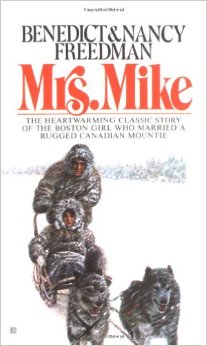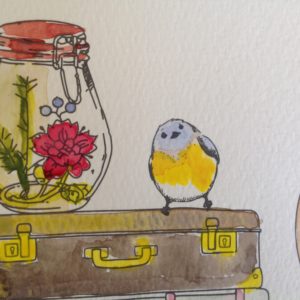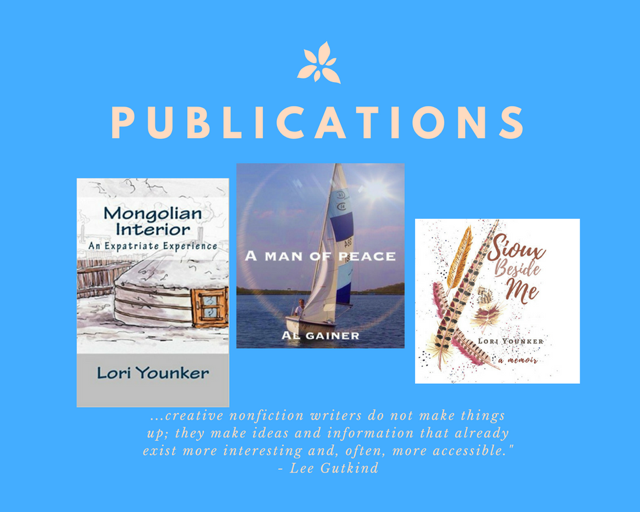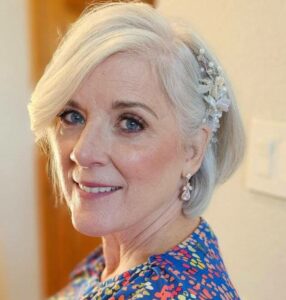The first-person point of view uses the pronouns of I, me, and other first-person pronouns to relate thoughts, experiences, and observations of a narrator or a writer’s persona. This form is also known as a first-person narrative, personal point of view, or personal discourse.
In recent days, I’ve been revisiting my favorite books with the purpose of analyzing why I gravitated toward these texts in the first place. One book which I’ve read numerous times with pleasure is Mrs. Mike. Authors Benedict and Nancy Freedman met a widow by the name of Katherine Flanagan and were so enticed by her story of life in the great northern reaches of Canada with her Mountie husband Mike, that they immortalized her experience in novel form. Looking at it now, I see it is an early example of creative nonfiction–the truth fleshed out with dialogue and first-person narration of what Katherine was seeing, thinking, and feeling.

The beauty of the first-person POV is that an author has a spectrum of choices at his disposal. At one end of the spectrum, he can write as if the events are unfolding right in front of him. This can be done with a sense of immediacy with the use of present tense and the voice of the character at a certain age and time. Or on the other side of the spectrum, he can write the story with the wisdom that age has brought to the character.
Here is an excerpt from Mrs. Mike that shows both of these perspectives in one text. When the narrator, Katherine Flanagan describes her actions, she uses a tone or voice of a young woman, as she would sound as the new wife of Mountie Mike. However, between scenes, she speaks analytically about her comings and goings as if decades had passed and she had the luxury of hindsight. Let’s demonstrate with this portion of the novel that jumps in where Katherine was choosing a book from her Scottish neighbor’s little library…
I searched carefully and was tempted by a beautiful brown and gilt edition of Famous Scottish Judges, and by a sturdy Complete Works of John Milton, but I fell when a book opened to a five-color map of Manchuria and Inner Mongolia. I never could resist maps of strange places, and I walked home from the McTavishes carrying The History of China, Vols. I, II, and III.
Mike was astonished. “Couldn’t you find anything lighter?”
I told him that China interested me very much and that I was going to read the whole thing from Mythical Times to Modern Times.
“Well,” he said helplessly, riffling the pages, “I suppose you know what you’re doing. But why China? I should think you’d be more interested in a history of Ireland or Canada.”
“China,” I said, “is the seat of the world’s oldest civilization.”
Mike burst out laughing. “So you already read the introduction on the way over.”
I had, and I could hardly wait to get into the first chapter. That night I lit a bear-grease candle and opened to the “Age of the Five Rulers.”
For weeks I lived in two worlds. I felt that if I stepped out of my door I would see, not the Alberta prairie but the plains of Fukien. Jade and lotus and porcelain were words I murmured to myself while I worked. I cannot explain the overpowering fascination that dry, long-winded history had for me. Perhaps it was that so much time had passed since I had read any book. Perhaps it was the pictures of cloudy mountains and twisting rivers that reawakened the desire to wander in far places that always slept in me. Or perhaps the amazing people I could be while smoking meat and making soap.
From a point in the future in which she has outlived the troubles of her young married life, Katherine Flanagan can share with us the knowledge necessary to have a comprehensive understanding of her motivations and choices.
For weeks I lived in two worlds. I felt that if I stepped out of my door I would see, not the Alberta prairie but the plains of Fukien. Jade and lotus and porcelain were words I murmured to myself while I worked. I cannot explain the overpowering fascination that dry, long-winded history had for me. Perhaps it was that so much time had passed since I had read any book. Perhaps it was the pictures of cloudy mountains and twisting rivers that reawakened the desire to wander in far places that always slept in me. Or perhaps the amazing people I could be while smoking meat and making soap. [italics/bold mine]
Finally, this text is a reminder of the complexity of the process of creative nonfiction as authors take on other people’s personas to capture the truth of someone’s life. Nowadays, we call it ghostwriting.
Back to Writing Tips
On to writing in 1st Person with hindsight



